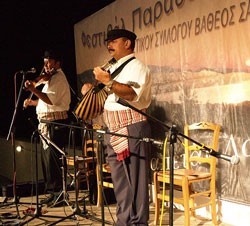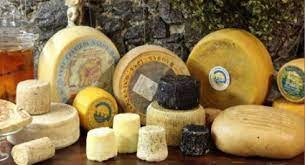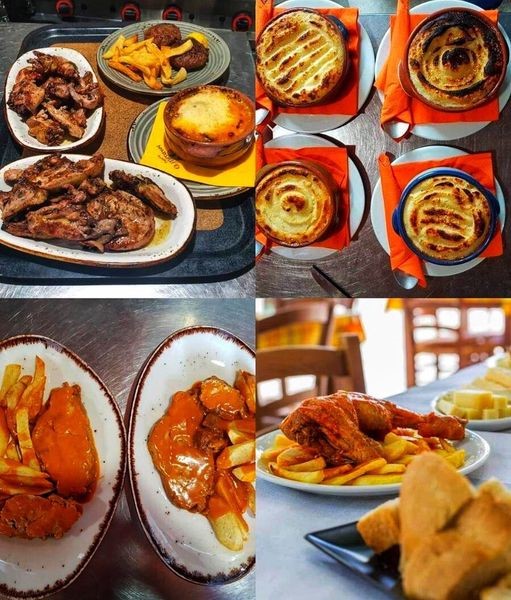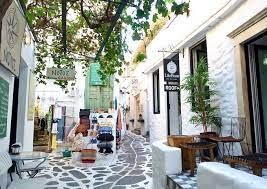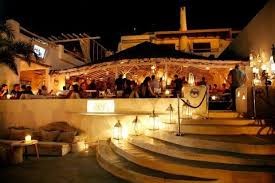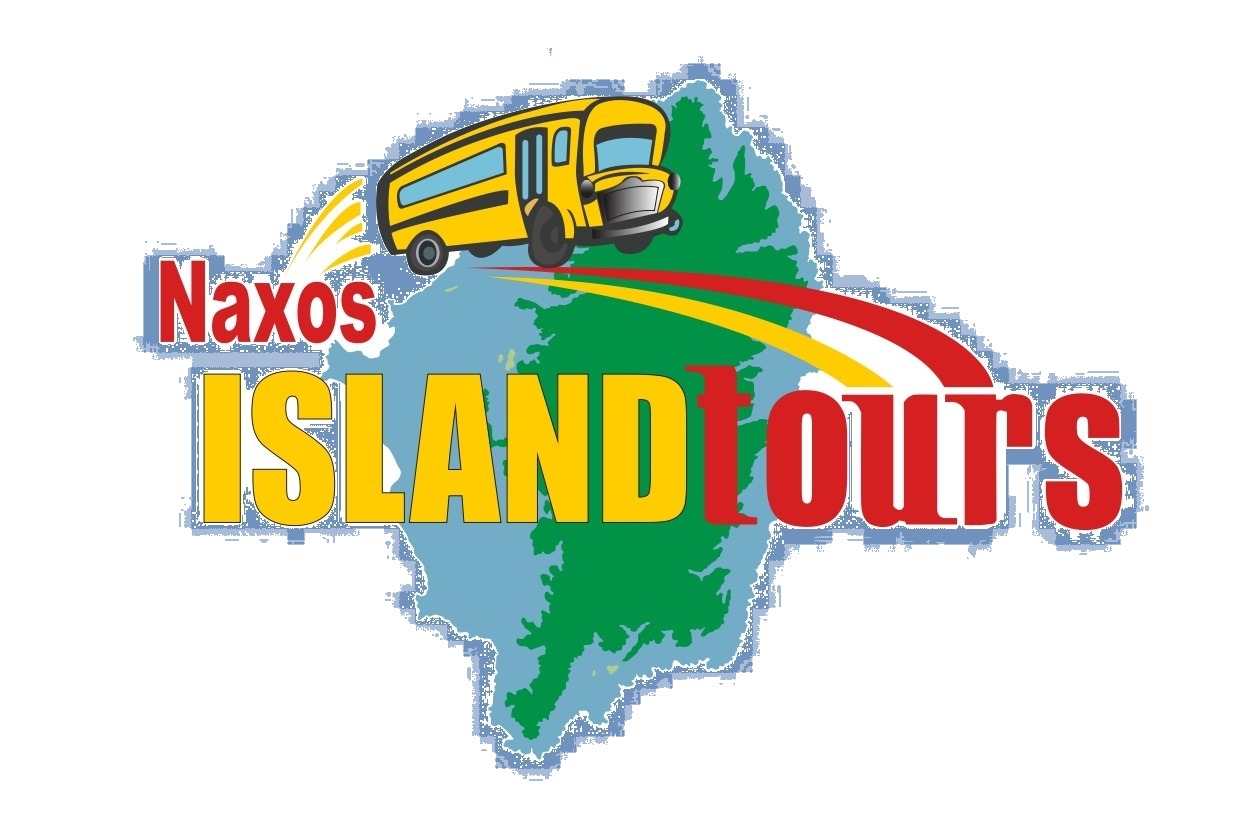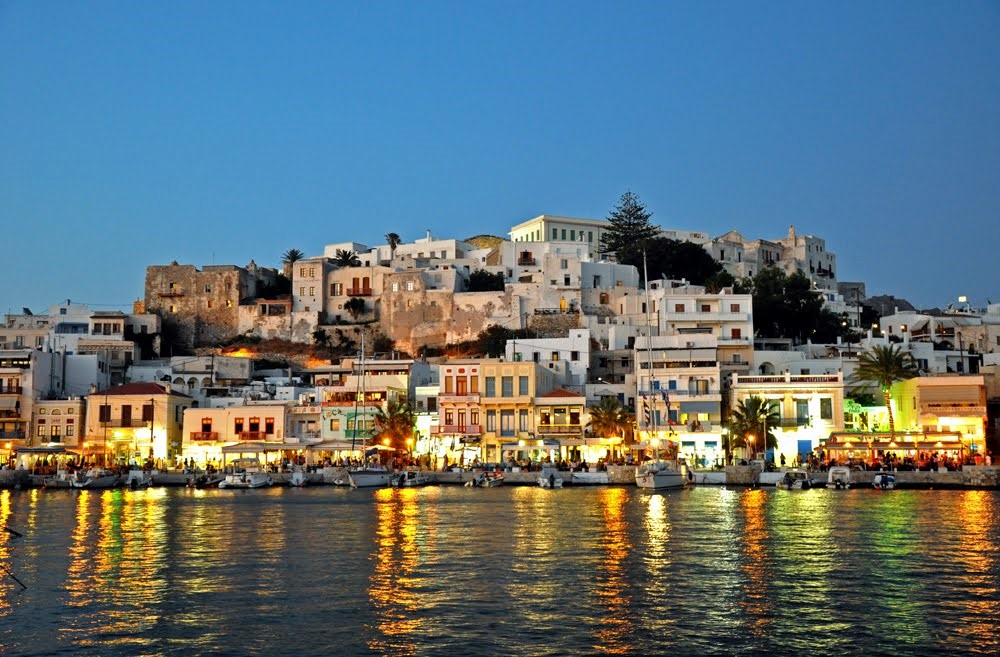
Video Clips entirely filmed on Naxos island .Get a taste!
NAXOS IN HISTORY
Naxos is the biggest and most fertile island in the Cyclades, famous for its rich history and beautiful architecture. According to mythology, Zeus, the king of gods grew up in Naxos, hidden away from the ferocity of his father, Cronus as well as his son Dionysus, the god of wine. Dionysus loved Naxos so much that he blessed it with fertile land, full of vineyards, producing a wine of excellent taste and fine quality.
Naxos is also the place where Ariadne was abandoned by Theseus. Theseus and Ariadne fell in love with each other so she decided to help her lover to kill the Minotaur of Crete by helping him to find his way out of the labyrinth where the Minotaur was kept and then they left. On their way back to Athens, they stopped for supplies on Naxos island. There, he left Ariadne because Dionysus fell madly in love with her. The God took the young girl to Mount Drios and, from their union, Oinopion (Wine Drinker), Staphylos (Grape) and Evanthi (Lovely Flower) were born.
Ancient times
Historically, Naxos was the most important center of civilization of all the Cyclades during the ancient period, 4000-1000 BC. The Thracians were the first inhabitants in Naxos who remained for two centuries until the Carians took control of the island. Their leader’s name was Naxos and he named the island after him.Then the island was dominated by the Ionians who contributed to the development and growth of Naxos, with the sea trading which brought wealth during the 7th century BC.Then we had the Persian invasion which was disastrous for the local economy and the people. Along came the Peloponnesian War , during which the Athenians lost from the Spartans taking under control of the island. Then, Naxos felt under a succession of authorities which were the Macedonian Empire, the Ptolemy of Egypt, the Rhodians and, in 41 BC, the Roman Empire. Christianity appeared on the island during the 1st century AD.
There are plenty of monuments worth visiting from the era starting from the island’s trademark ,Portara or Demeter temple and Dionysos temple at Iria.
A significant historical period was the Byzantine times where The Byzantines (Eastern Roman Empire) also built a series of fortifications on the island. One such example is built atop a low but inaccessible hill on the island’s northern end. It is the Kalogeros Kastro (Monks Castle). Another, the Apano Kastro (Upper Castle) is located west of the Tragea plain. And yet another, the Apalirou Castle is located in central Naxos, built atop a sheer slope; the island’s capital during the Byzantine era, was positioned at its foothills to have access to arable land.
Today, there are more than 500 churches on the island. The fortified monastery of Fotodotis Christos (Lightgiving Christ) on the outskirts of Danakos, Panagia Drosiani near Moni and Panagia Protothroni near Halki are important monuments of the Early Christian period.
Venetian period
The Venetians marked an important period in the history of Naxos. In 1207, Marco Sanudo took over the Cyclades and established a duchy, called the Duchy of the Aegean where Naxos was the headquarters and the new ruler was installed creating the beginning of a long line of Dukes in Naxos. The first reaction of the inhabitants of Naxos was negative against the Venetian ruler but they were obliged to admit their defeat.
During those years, Marco Sanudo divided the island into 56 provinces, distributed among the various Venetian nobles, and built his powerful castle on the ruins of the ancient Acropolis of Naxos Town. The Venetian domination lasted till 1564, and there was Turkish Occupation on the island.
Ottoman rule-Modern times
During the Turkish Ottoman rule, Naxos had a privileged place for the Venetian negotiate to keep their authority and their monarchic administration and the Turks never established on the island and, the only thing there were demanding was to receive their taxes in time. Naxos joined the Greek struggle for independence from the Ottoman Empire on May 6, 1821.
Dozens of Naxiots are recorded in the so-called Struggle Archive at the National Library of Greece. Leading figures were the bishop of Paros and Naxos, Ierotheos, and Michail Markopolitis.
In the 19th century, main town Chora had about 2,500 people, while the population in the rest of the island was spread out in dozens of villages and was mostly engaged in farming and animal breeding.
Society was divided into three classes: the “masters” and feudal lords that lived in mansions, the simple peasants and other working people, and the “harbor” people, that hanged around the port barefoot and hungry, looking for the odd job that would earn them a bit of money.Four cafes in the harbor area were the main meeting points for the local society in the interwar years.The port was the main hub of the island, where commercial vessels loaded and unloaded goods.
The exporting of emery, which is mined on the eastern seaboard, made an important contribution to the economy of Naxos.The Venetian castle neighborhood, in the old fortified citadel, retained its aristocratic character up to the 1960s.
Nowadays economy is based on agriculture, cattle breeding,exportation of marble,emery and tourism.
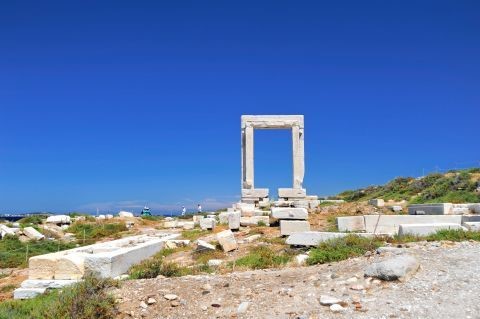
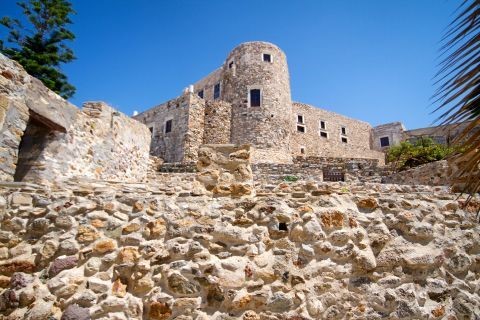

NAXIAN CULTURE AND TRADITION
The cultural heritage and tradition on Naxos Island thrives today with the rich traditions of the past continue until today.
Naxos has always nurtured a lively relationship between man and art, ever since the first statuettes, the first vessels and the first creations in marble by known and unknown technicians in the Proto-Cycladic period (3200-2000 BC).
Temples and sanctuaries, citadels, mansions and humble folk houses were mingled into the indissoluble web of time together with traditional crafts, such as weaving, wood carving, iconography etc.
Alongside, music, song, feasting and dance gave an outlet to joy, the sorrows and the dreams of the people of Naxos, leaving an invaluable legacy to modern researchers.
Visitors to Naxos are sure to experience many of these customs and traditions as the cultural heritage and tradition on Naxos continues today, especially during the holidays and special events that take place throughout the year.
Naxos Musical tradition
Out of all the Cycladic islands only Naxos today has such a lively tradition in music and dancing.
For the young Naxians or Axiotakia (a person from Naxos is called an Axiotis in everyday language) it is said they come out of their mother’s bellies dancing, because they learn to dance so from an early age, as if they had the rhythm in their genes. It is not accidental that well known families of musicians (such as the Konitopoulos, Hadjopoulos, Koukoularis families), who have kept Greece’s island music alive, come from Naxos. The island music is still very much alive in Naxos today. In Kinidaros, Komiaki, Koronos and Apiranthos entire families have devoted their lives to music: their members become singers, musicians or song writers.The folk music instruments that are popular in Naxos are the souvliari (a kind of shepherd’s pipe), the doubaki (a drum), the tzambouna, the violin and the lute. The souvliari was used at festivals till the early part of the 20th century and the tzambouna was the main instrument used in the local festivals up until 1920-1930, when the violin took over. The tzambouna is still used, but mostly at small festivals taking place in people’s houses and during the carnival the most popular instruments (the violin especially). These came to Naxos from Asia Minor and left their stamp on the «musical» life of the Naxians over the last century.
If you get the chance to go to an island festival, you will be able to discover the beauty of the Naxian music and dancing for yourself.
Religious feasts & festivals
20th of May
On 20th May, the feast day of Agios Thalaleos is celebrated in Agios Thalaleos village.
7th of July
On 7th July, the feast day of Agia Kyriaki is celebrated in Potamia village.
8th of July
On 8th July, the feast day of Agios Prokopios is celebrated in Agios Prokopios village.
29th of June
On the 29th of June is the feast day of Agioi Apostoloi which is celebrated with a three-day festival in Melanes village.
14th of July
On 14th of July, locals celebrate the patron saint of Naxos, Agios Nikodeimos Agioritis feast. Celebrations take place mainly in Chora and after the church ceremonies, a procession of the icon starts throughout the streets of the capital followed by a lively feast with food,drinks and fireworks.
17th of July
On the 17th of July, there is a festival in Koronos village dedicated to Agia Marina.
25th of July
On 25th July, the feast day of Agia Anna is celebrated in Agia Anna village.
27th of July
On 27th July, the feast day of Agios Panteleimon is celebrated in Agersani village.
6th of August
On 6th August, the feast day of the Transfiguration of Jesus the Saviour is celebrated in the villages of Glinado, Damarionas, and Kourounochori.
15th of August
On the 15th of August, the feast day of Virgin Mary, where great feasts occur in the villages and capital of Naxos but the best-known festival takes place in Filoti, at the 200 years old church Panagia Fiiotissa as well as in Apiranthos were dancings take place in the afternoon. Hundreds of people arrive to honor the icon of the Holy Virgin.
23th of August
On 23rd August, the feast day of the Holy Virgin’s novena is celebrated in Tripodes village.
29th of August
On 29th August, one of the feast days of Agios Ioannis is celebrated in the villages of Apiranthos, Apollonas, and Agersani.
8th of September
On 8th September, the feast day of Panagia Theoskepasti is celebrated in the villages of Komiaki and Potamia.
Panagia Agrokiliotissa
The feast of Panagia Agrokiliotissa takes place on the first Friday, after Easter at Koronos village. It is known as the most important feast of Naxos where pilgrims worship the miraculous icon of the Holy Virgin. Locals celebrate with wine, delicacies, and dances.
Cultural events
Axia Music Festival
The Axia Music Festival is a lovely event organized annually in Halki. It is highly appreciated by the lovers of classical music and those who are interested in hearing some poetry. The festival hosts excellent musicians to make your nights in Naxos even more romantic.
Dionysia Festival
Dionysia is one of the best-known festivals scheduled in Naxos including concerts, theatrical performances, art exhibitions and a plethora of other events which are crowned with the wine feast, in honor of God Dionysus. The festival is held during the first weekend of September.
Bazeos Festival
The Naxos Summer Festival is hosted in Bazeos Tower for more than 20 years now and features excellent performers from all art fields, from Greece and other countries.
Rakee Distillery Festival
The Rakee Distillery Festival is also organized in September, as rakee and kitron are the traditional drinks of Naxos.
Potato festival
Naxos’ now famous Potato Feast is held every August with great success at Kapares position, Agia Anna.
Thousands of people of all ages, both locals and visitors, are drawn to the feast to devour the island’s potato-based recipes, made using locally produced potatoes and cooked with devotion and imagination.Celebration and dance, to the sounds of traditional songs, add to the overall enjoyment of this festive event, one dedicated to this local farming product linked – like no other – to the most delicious experiences in our lives.
There have been efforts by the local authorities and volunteers of Naxos to revive the old customs such as the Carnival of Naxos. One of the old customs which still occur in the island is Klidonas Custom which is also met in other Cycladic islands.
NAXIAN GASTRONOMY
Greek holidays is all about sea, sun, fun and FOOD. All these new and mouth-watering Mediterranean flavours can literally make you fall in love with Greece and especially with Greek cuisine. Naxos is among the top food destinations in Greece. The main reason is its vibrant agricultural economy which is deeply rooted as far as prehistoric times and still supports the island, providing an abundance of fresh and tasty vegetables, meats and herbs, all from the fertile Naxian land. The aromas spread in the air as you pass by all these little traditional family owned taverns that look so appealing…, makes your mouth water!
All about cheese ……
Today, the Naxian cheese industry includes a wide variety of tastes.
Interestingly, many local producers persist with the traditional production methods while having modernized their installations.
Only a few characteristic Naxian cheeses are presented here but it is worth seeking out more.
- Naxos Gruyere – The most widely-recognized Naxos cheese is the Naxian cheeses gruyere, the production of which has been protected since 1988 and carries a Protected Designation of Origin (PDI) since 1996. It is made with a minimum 80% cows milk, 20% goat’s and cheep’s milk at most and traditional rennet. It is a hard, table cheese, with a pleasant flavor and fragrance.
- Kopanisti – Another PDI cheese is kopanisti. Depending on the era it is made with pasteurized goat’s or cow’s milk of Naxos. It is soft cheese ripening with flavor quite strong and quite spicy.
- Xinomyzithra – Another well-known Naxian cheese is xinomyzithra, a cream cheese with a slightly sour taste, mainly made with goat’s milk. It is ready in 24 hours after the milk has been drawn and has to be consumed within a few days because it is fresh and contains no preservatives.
- Xinotyri is the same cheese as xinomyzithra, only it is left to dry for several weeks, until it becomes hard.
- Arseniko – Another traditional cheese variety is kefalotyri, locally known as arseniko (“masculine”), which is produced with 100% sheep’s milk. It is a hard cheese in cylindrical shape, with a hard but relatively thin outer layer and a color between off-white to off-yellow. It has a pleasant salty and piquant taste and rich aroma.
- Thylikotyri – Besides “masculine,” Naxos also produces thylikotyri (“feminine cheese”). This is produced right after arseniko, it is white in color, with a velvety texture, light buttery flavor and a balanced salty taste. Despite being low-fat (19%-21%), it has a pleasant taste and it best accompanies wine.
- Komos – Another cheese worth tasting is komos, prepared as a sequel to thylikotyri. The cheesemakers would gather what was left of thylikotyri and let it ferment with aromatic mountain herbs. The retult was komos, a very low-fat cheese that best accompanies spirits, ouzo and tsipouro.
All about potato……
A potato is not just a potato on the island of Naxos. It is one of its main local products, and one of Greece’s best, thanks to the island’s natural abundant water supply.
On Naxos you can find the potato boiled, stuffed, barbecued, souffled. It even has its own festival — every year in the beginning of August — that showcases its many tasteful varieties.
On Naxos potatoes have a long history. It goes back to the fertile land making Naxos – since 1950s — the official potato seed producer of Greece. According to research, the potato has been cultivated on Naxos since the 1700s.
Today, production is estimated at 8 million kilos per annum, a figure that can expand exponentially thanks to the modernization methods of gathering the potatoes and packaging them.
LOCAL special recipes
- Salatouri: steamy salad with cooked ray, parshley, oil/lemon sauce and onion.
2.Kalogeros: a recipe that combines eggplants, beef chops, tomato and graviera cheese baked in the oven
3.Pork with provatses: One of the most popular recipes of the island where pork is cooked with a special type of local greens called provatses.
4. Rosto: Special Sunday dish with pork in a pot with garlic,salt,pepper,local red wine and tomato sauce
- Patoudo: Easter recipe. Lamb baked on grapevine wood and staffed with local greens, koutsounades
(poppy’s leaves), fresh onion,fennel, dill herb, spinach, rice and raisins.
6.Sefoukloti a sweet pie with homemade pie crust, local greens ,fresh onion ,dill herb, parshley, rice, raisins and honey .
7.Patatato a Naxian recipe with boiled goat meat,potatoes,onion ,garlic,tomato,salt and pepper.
Enjoy your meal!!
NAXOS NIGHTLIFE
Indulge in Naxos’s nightlife…
Dance to the tune of Greek and foreign rhythms, sip excellent local wine, drink exotic cocktails or Naxian ones based on the local Citron liquor or the local raki spirit with honey, rakomelo.
As soon as dusk has turned into night, Chora is transformed into a centre of fun for all tastes.
Lose yourself in the labyrinth of small streets with restaurants and bars in the Old Town or watch the moon while sitting at a seaside bar along the port’s promenade (known as the paralia) or by the beaches along the coast such as Agios Georgios, Agios Prokopios, Plaka, and Agia Anna.
Entertainment on Naxos has its own characteristics with something for everyone: clubs and small bars with Greek and foreign music; wine bars with a broad variety of wines and spirits and restaurants with live music.
Atmospheric venues — with superb views of the Aegean sea — where you can enjoy your drink listening to soft music, you will find in Chora, but also along the island’s most famous beaches.

